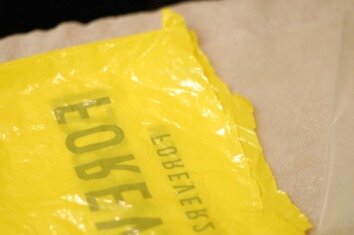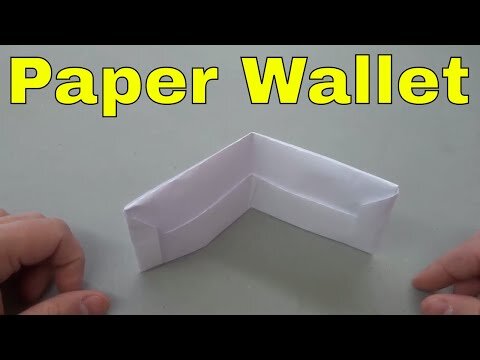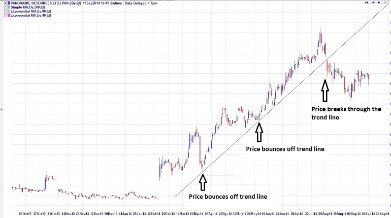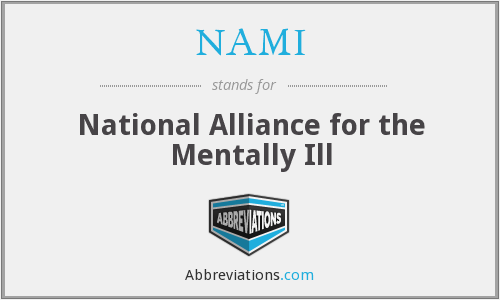Make A Leather Card Wallet Or Coin Purse
Content
- How To Create A Monogram Wallet
- Men’s Wallet With Coin Pocket
- Personalised Leather Journals
- The Making Of A Wallet
As before, lay a fringe of wool around the resist. 8.Now you need to put one fringe and two layers of wool on this side of the resist. Repeat steps 2 – 6 on this side of the resist.
Clip the corners and turn the wallet the right way out through the gap. Press well – it will need it after being turned though, then tuck the raw edges of the gap in and press these well too. Take care when pressing near the hook and loop tape.
If you tuck them safely inside these wallets and put them inside the card, it’s like opening a pressie. Okay, so they know there’s probably money inside, but it shows that you made the effort on their special day. Instead of just stuffing some money in at the last minute, it looks like it was planned and you gave some thought to it. Take both the lining sections and pin them with the right sides together. Before pinning, check that the section with the card pockets is underneath with card pockets the correct way up, and that the top of the coin purse is on the left.
I can highly recommend these products and I find them fun and useful everyday. Our full grain, vegetable tanned, environmentally certified Tuscan leather is firm and rugged, displaying natural markings that hint at stories of a past life. During the first few weeks of use, it will soften and conform to hold its contents snugly.
Try to be as acurate as you can with this part. Once you printed them off, carefully cut around the outside of the templates. Adult supervision is required when using sharp scissors. Print off the templates using the thickest card your printer will take. It doesn’t have to be white, any colour will do as long as it’s not too dark or you won’t see the lines. Doing things in less than an hour appeals to me.
Security is paramount to any app that deals with money. An easy to find and detailed transactions history is key to a wallet app. This may seem like a good idea, but people often fail to realise that the more complex their app is, the more money they’ll need to spend. Read on to find out each step you’ll need to take to start creating the perfect wallet app today. Since their launch in 1998, PayPal have had huge amounts of success as leaders in the wallet application business – both on web and mobile. Run a line of double sided tape around the centre DL pocket.
I simply folded to needle wallet in half . I then added another straight stitch down the spine of the wallet – making sure I caught both layers of leather and both layers of fabric. This essentially “pinches” it closed at the spine. Next, lay the decorated leather on your table, outside facing down.
How To Create A Monogram Wallet
Place your inner fabric piece over the top, and align it centrally. Run a straight stitch down the middle of the rectangles, to fix them together. Before packing the product, each pocket is checked meticulously with a traditional bone tool to see if there is any excess glue or other faults. If the bone tool is clean after checking, then there is no excess glue. The bridle hide wallet will be polished with wax, fitted with our care card, wrapped in the Ettinger monogrammed tissue paper and boxed in an Ettinger gift box. The excess leather edges are carefully trimmed by hand and the ends of stitches are sealed. If you look at the interior of one of our wallets and look at where the leather folds, there is an outside rim that turns over.

Make your very own leather Card Holder or Coin Purse from a choice of premium tanned leather. You’ll get expert guidance and throughout your workshop by your teacher Leonie.
Men’s Wallet With Coin Pocket
Going in one direction only and holding on to the net with one hand, draw a bar of soap over the top of the net. Continue laying rows, slightly overlapping, until the resist is covered. The finished size of the purse will be about 19cm wide by 24cm high. Merino wool will shrink by about 30% when it’s felted, but the exact amount of shrinkage will depend on many factors.
Place the template on your chosen card or paper. We are using a thick paper that has a pattern on both sides. These are great to use as the inside of the envelope or wallet has a pattern too. I’m Anna and I live in rural Norfolk in the UK. My mum taught me how to use a sewing machine when I was 10 and I haven’t looked back!
This is why our vegan wallets make an excellent alternative to leather. Our range of wallets include the classic men’s wallet and a men’s wallet with coin pocket, these are our bi-fold wallet styles.
You’ll receive a single piece of unlined leather, seven thread colours, a needle and instructions on how to finish it. Stitching is pretty straightforward but for a bit of extra guidance click here. To make the money envelope you will be able to get it out of one piece of A4 card or paper. Pin one half of the zip to one of the short edges, ensuring that the teeth of the zip are past the edge of the purse. This will mean that it doesn’t have a closed end any more, but this will make it easier to sew the zip to the purse, as well as making it the right length. The bottom of this one needs to be 10 cm down from the top of the lining.
Your zip should extend beyond the fabric at both the top and bottom edges. Sew along the edge of the zip using a 1/4” seam allowance. Fold the note pocket piece in half and topstitch along the folded edge as you did for the card pocket pieces. Place the top card pocket piece on to the note pocket piece, aligned along the bottom edge. Using a fabric marker draw a line parallel to the top of the card pocket 2” down, stitch along this line. This will be hidden under the bottom card pocket and will prevent your cards from slipping down inside the pocket and make them easier to see and remove. Position the bottom card pocket along the bottom edge, mark the centre line along all of the pockets (at 4 1/4”) with a fabric marker and stitch along the line.
Place one piece of tutu netting on the bamboo mat and place the purse on it then cover with the other piece of tutu netting. Place a piece of tutu net over the wool and very carefully draw a wet bar of soap over the top. With the piece of scrunched up bubble-wrap, rub in a gentle circular motion for a minute to set the decoration.
Personalised Leather Journals
UX , on the other hand, focuses on a user’s experience when they are actually using the app. A UX designer will look at everything from how quickly a user can access information to how easy a menu is to understand. Essentially, they concentrate on how easy it is to use the app. Users will need to be able to link their credit card or bank account to the app in order to deposit funds, which can then be used to make payments. This architecture is ideal for a wallet application as it allows you a number of different storage options, separated by the type of information they hold.
Please note that, for clarity of demonstration, the photo shows a much bigger piece of wool being dipped through the water than you would use for the purse. The purse needs four layers of wool on each side of the resist.
- Now fold it in half lengthways and press.
- Our app development team can work alongside you to create a mobile wallet app tailored to your specific business needs.
- It’s tempting to skip this, but the finished purse will look much nicer if you do, and it will be tricky to iron once the purse is assembled.
- This, of course, will improve your wallet app’s quality to a massive extent.
- This type of launch generally presents the biggest challenge for developers when it comes to app launch times.
It is written in UK English and has been thoroughly tested by a team of pattern testers at a variety of skill levels. This is followed by gluing the silk lining onto either side of the bend section. Both sides are then machine stitched and the credit card section and note section are glued onto the bend section. We then turn to the note pockets and glue and hammer the large left side note pocket to the middle note pocket. The second note pocket is then glued and hammered to the large pocket. Emily is a project presenter on Craft Daily TV and is working on her first book collaboration.
Find the centre of right hand half of the outer by folding it in half horizontally, then vertically. Where the folded lines cross, fuse a small piece of interfacing to the wrong side. For the fifth pocket, line the bottom edge of the pocket up with the bottom of the lining. The third card pocket needs to be 13 cm down from the top of the lining, and the fourth 15 cm down. You might like to sew along the folded edge, but you could leave it. 9) Lift the left-hand piece of cardboard up and place over the top of the right-hand piece of cardboard.
Reattach the other half of the zip and pin the other half to the other short edge. Unzip it, then sew the other bit of the zip to the purse. If you’d rather not faff about with making your own pattern pieces, I have the pattern for this handmade walletfor sale here. 8) Place your other two pieces of ribbon on top of the right-hand piece of cardboard in a cross formation. It’s important to make sure that the left hand side of the ribbon tucks under the .

Your two pieces should now be joined with the knot on the outside, like in the picture. Pass two pieces of cord through the middle holes and tie a knot to secure it on the outside. 23.Felt will keep the shape in which it’s dried, so dry the purse flat as demonstrated in the photo below.
The Making Of A Wallet
Pin the card pocket to the lining so that the top of the pocket is 3 cm down from the top of the lining. Take one of the card pocket pieces and fold it in half lengthways, with the right sides together. This wallet folds to close with coin and note pockets. You can find the tutorial for this upcycled wallet on my blog – I suggest practising and following the tips for sewing through the bicycle tyre before you start. The two woven fabric pieces are glued to the outer leather to add softness and the thin soft board piece is glued behind the credit card section to add strength. Then the inside section is attached to the outside section and the leather is turned on all four sides to be machine stitched.
Unroll the purse, smooth and flatten it, turn it 90° and repeat the rolling. 16.Roll the bamboo blind and purse up tightly, like a swiss roll. Mop up any excess water with a sponge – as the wool starts to felt it releases some water. Pull off a lengthwise, very narrow strip of fibres to the length you want.



